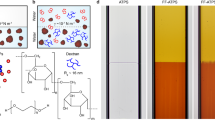Abstract.
Hexagonal and labyrinthine patterns appear in thin ferrofluid films after application of a magnetic field perpendicular to the film. The pattern size and the stability of the hexagonal and labyrinthine structures can be predicted by free energy approaches. Several approximations are used in the literature to accelerate the calculation of the magnetic energy. They are usually based on the use of a uniform, average or constant magnetization. In the uniform approximation the magnetization at all points in the pattern is assumed to be equal to its value at the center of the stripes or cylinders in the labyrinthine or hexagonal patterns. Recent papers indicate that this approximation gives qualitatively wrong results. This is corroborated here by a comparison with accurate results. When a volume-averaged magnetization is used during the calculation of the demagnetization field, from which the magnetic energy is evaluated, the theoretical results are only slightly modified with respect to the accurate results. Thus, we can propose a new method which gives results in good agreement with the accurate values and accelerates the calculations by a factor of 1000. The influence of the approximations is explained by a study of the evolution of the demagnetization field in the patterns. This study indicates that the volume-averaged approximation might only be reliable for patterns with a homogeneously distributed magnetic fluid. Another approximation of a constant magnetization, which is widely used in the literature, assumes that the magnetization does not change during the pattern formation in contrast to the uniform and average approximations. A different way of computing the constant magnetization than that usually employed markedly improves the agreement with the accurate results. This is explained by the derivation of a direct relationship between the approximations of a constant and an average magnetization.
Similar content being viewed by others
References
M. Seul, D. Andelman, Science 267, 476 (1995)
R.P. Huebner, Magnetic Flux Structures in Superconductors (Springer-Verlag, Berlin, 1979)
J.A. Cape, G.W. Lehman, J. Appl. Phys. 42, 5732 (1971)
R.M. Weis, H.M. McConnell, Nature 310, 47 (1984)
H.M. McConnell, Annu. Rev. Phys. Chem. 42, 171 (1991)
E.N. Thomas, D.M. Anderson, C.S. Henke, D. Hoffmann, Nature 334, 589 (1988)
H. Hasegawa, T. Hashimoto, Polymer 33, 475 (1992)
K. Kern, H. Niehus, A. Schatz, P. Zeppenfeld, J. Goerge, G. Comsa, Phys. Rev. Lett. 67, 855 (1991)
R.E. Rosensweig, Ferrohydrodynamics (Dover Publications, Mineola, 1997)
A. Cebers, M.M. Maiorov, Magnetohydrodynamics 16, 21 (1980)
R.E. Rosensweig, M. Zahn, R. Shumovich, J. Magn. Magn. Mater. 39, 127 (1983)
J.-C. Bacri, R. Perzynski, D. Salin, Endeavour, New Series 12, 76 (1988)
F. Elias, C. Flament, J.-C. Bacri, S. Neveu, J. Phys. I France 7, 711 (1997)
C.-Y. Hong, I.J. Jang, H.E. Horng, C.J. Hsu, Y.D. Yao, H. C. Yang, J. Appl. Phys. 81, 4275 (1997)
J. Legrand, A.T. N’Go, C. Petit, M.P. Pileni, Adv. Mater. 18, 53 (2001)
S.A. Langer, R.E. Goldstein, D.P. Jackson, Phys. Rev. A 46, 4894 (1992)
A.J. Dickstein, S. Erramilli, R.E. Goldstein, D.P. Jackson, S.A. Langer, Science 261, 1012 (1993)
D.P. Jackson, R.E. Goldstein, A.O. Cebers, Phys. Rev. E 50, 298 (1994)
A. Cebers, I. Drikis, Magnetohydrodynamics 32, 11 (1996)
I. Drikis, J.-C. Bacri, A. Cebers, Magnetohydrodynamics 35, 203 (1999)
F.M. Ytreberg, S.R. McKay, Phys. Rev. E 61, 4107 (2000)
D. Lacoste, T.C. Lubensky, Phys. Rev. E 64, 041506 (2001)
J. Richardi, D. Ingert, M.P. Pileni, J. Phys. Chem. B 106, 1521 (2002)
J. Richardi, D. Ingert, M.P. Pileni, Phys. Rev. E 66, 046306 (2002)
The Fortran package \(\cal HEXALAB\) is a highly optimized code of about ten thousands statements, which calculate the geometry and energy of magnetic fluid patterns. The type of patterns are not restricted to hexagonal or labyrinthine ones. \(\cal HEXALAB\) was developed by J. Richardi at the LMN2 (direction: M.P. Pileni)
J.D. Jackson, Classical Electrodynamics, 3rd edn. (John Wiley & Sons, New York, 1998)
W.H. Press, B.P. Flannery, S.A. Teukolsky, W.T. Vetterling, Numerical Recipes: The Art of Scientific Computing (Cambridge University Press, Cambridge, 1986)
J. Richardi, M.P. Pileni, Phys. Rev. E 69, 016304 (2004)
J. Richardi, M.P. Pileni, Prog. Theor. Chem. Phys. 12, 41 (2003)
Author information
Authors and Affiliations
Corresponding author
Additional information
Received: 28 October 2003, Published online: 2 March 2004
PACS:
47.54. + r Pattern selection; pattern formation - 47.65. + a Magnetohydrodynamics and electrohydrodynamics - 77.84.Nh Liquids, emulsions, and suspensions; liquid crystals
Rights and permissions
About this article
Cite this article
Richardi, J., Pileni, M.P. Towards efficient methods for the study of pattern formation in ferrofluid films. Eur. Phys. J. E 13, 99–106 (2004). https://doi.org/10.1140/epje/e2004-00044-1
Issue Date:
DOI: https://doi.org/10.1140/epje/e2004-00044-1




